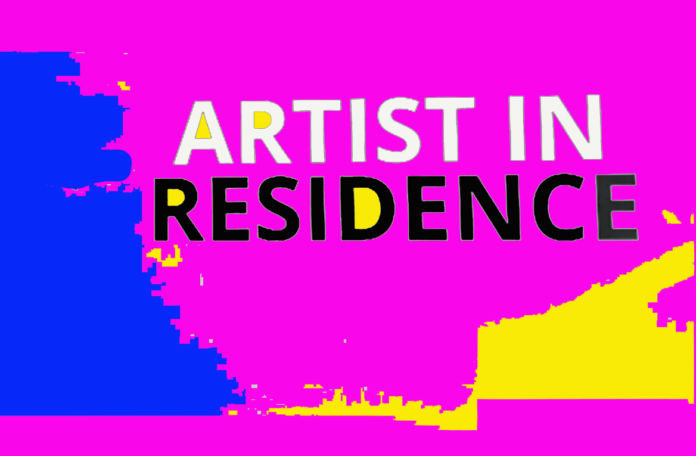What Exactly is an Artist-in-Residence (and Should Your Museum Have One)?
Ashleigh Hibbins
Artist-in-residence
Description
“Artist-in-residence, or artist residencies, encompass a wide spectrum of artistic programs which involve a collaboration between artists and hosting organisations, institutions, or communities. They are programs which provide artists with space and resources to support their artistic practice.” Wikipedia
Museum Professional
Artist residencies are a growing trend in museums around the world, but what is an artist in residence?
An artist-in-residence is when a museum recruits a person (or group of people) with a specific skill or attribute to produce work, provide advice, and/or promote the museum for a defined period of time, from just a few days to a year or more.
When done right, everyone can benefit from an artist residency: the museum gains new knowledge, ideas, products, and audiences, the artist-in-residence gets special access to the museum’s collections, spaces, and expertise to inform their own work, and the museum’s visitors can enjoy the new displays, experiences, and approaches that are produced by the artist-in-residence. As artsy.net says, residencies are incubators for productivity, funding, forging relationships, and finding inspiration – but there’s no ‘one-size-fits-all’ approach. Read on to explore how to run a successful artist residency at your museum.
Artist Residencies in Atypical Museums
Even if you’re constrained by budget or space, an artist in residence could still work for your museum with a little creative thinking.
Side Street Studios in Cape Town isn’t your standard art museum – it’s a complex of studios, workshops, and galleries spread across three once-abandoned buildings. Since 2015 they’ve leveraged their unique spaces to host three-week residencies with a particular focus on street art, urban exploration, and community engagement. Resident artists live in the complex for free, and in return create a piece of artwork for the museum. By basing their residencies on in-kind exchange of creativity instead of cash payment, Side Street Studios has created a more affordable (and maybe even more productive) model that can be sustained long-term.
Artists in residence don’t even need to take up physical space in your museum. Take inspiration from LACMA, which recently launched its first Instagram residency by recruiting a local artist to take over the museum’s Instagram account. Like all successful residencies, this one benefits everyone involved: the artist gets a boost to their profile and work, while LACMA gets fresh content for their social media feeds, and the opportunity to connect with new digital audiences.
Can you only have resident artists?
Many museums host visual artists in residence, but others have taken a less traditional approach. The Delaware Art Museum hosts entire family-in-residences who work together to create art installations in the museum’s family space. On the other side of the Atlantic, the Victoria & Albert Museum currently hosts opera residents to compose a new opera based on the museum’s exhibitions.
Bottom line: With a little imagination and perspiration, you can create an artist in residence programme that works for your unique museum.
OK, I’m convinced about the whole artist residency thing. Now what do I do?
Deciding to host an artist in residence is the most important step; now, it’s time to put your idea into action. The following steps will help you create a successful residency program for your museum.
- Define what you want your artist residency to achieve. Do you want to promote an exhibition or event, create a physical piece of work, develop workshops, produce online content, or something else? Defining what you want will pinpoint the type of residency your museum needs, so be as precise as possible. For example, the Nuuk Art Museum in Greenland runs a residency specifically to encourage exchange between Greenlandic and Nordic artists.
- Plan a workable budget. Is your museum going to pay your resident artist or cover expenses? Will you need to spend money on extra supplies or marketing? Be realistic about what your residency can achieve within the budget you have.
- Recruit your resident. You’ll need to put out an open call for people to apply to your residency, or in some cases, approach individuals you may already have in mind. Consider what kinds of candidates you want to attract, and how this will impact where and how you spread the word about the opportunity. You’ll need to create a brief to explain to potential applicants about what the residency involves, the qualities and skills you’re looking for, and what’s in it for them.
- Make a lasting impression. Before the artist residency even begins, it’s important to consider how it will end. What will the legacy of the residency be – an artistic creation for the collection, new audience relationships, improved knowledge of a topic, or something else? The long-term impact of the residency will ultimately be what defines its success.
Should you start with an artist in residence?
If your museum can achieve all the steps above, then we say YES. Inviting new perspectives, talent, and experimentation can only make your museum even more awesome.
What do you think? Are you intrigued by the idea of having an artist-in-residence at your museum? Are you already doing this? Let us know!









